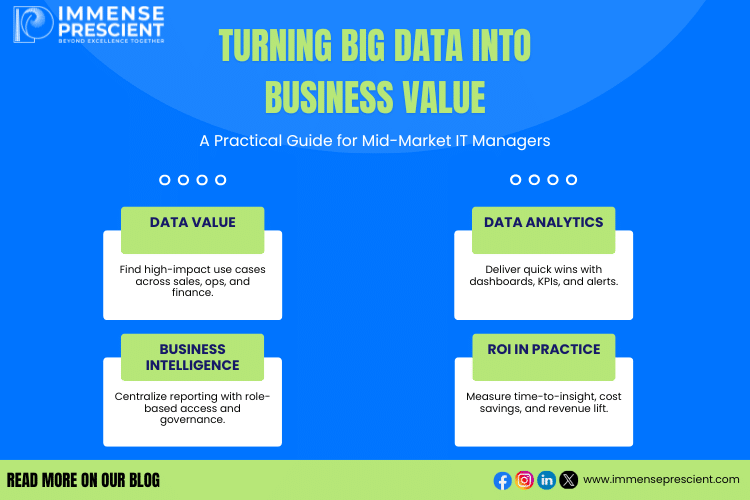Turning Big Data into Business Value: A Practical Guide
Introduction – Turning Big Data into Business Value
In today’s hyper-connected world, businesses are swimming in data but only a few are turning this ocean of information into real business value. Big data is no longer just a buzzword; it’s a competitive necessity. This practical guide explains how you can transform your data into insights that drive smarter decisions, boost performance, and create long-term growth.(Related read: Data Is the New Oil—But Most Companies Are Still Digging with Spoons
1. Understand the “Why” of Big Data
Before diving into tools and analytics, understand why you’re collecting data. Align your data initiatives with clear business goals whether it’s improving customer experience, reducing costs, or identifying new revenue streams.
2. Break Down Data Silos
Data trapped in isolated systems diminishes its value. Invest in integrated platforms that unify customer, operational, and financial data. This consolidated view empowers decision-makers to act confidently.
3. Use the Right Analytical Tools
Choosing the right tools matters. From real-time dashboards to predictive analytics, select platforms that can scale with your business. Cloud-based solutions like AWS, Azure, or Google BigQuery can help you analyze massive data sets quickly.
4. Prioritize Data Quality and Governance
Poor data quality leads to poor decisions. Establish data governance policies to ensure accuracy, privacy, and compliance. A single source of truth makes your analytics efforts far more reliable.
5. Turn Insights into Action
Data alone doesn’t drive value action does. Build cross-functional teams to translate insights into strategy. Pilot initiatives, measure results, and iterate quickly. (Learn more about aligning tech investments with strategy in How to Align Technology Investments with Business Outcomes)
6. Build a Data-Driven Culture
Cultural change is often the hardest but most important step. Train employees at all levels to understand data and act on insights. Empower teams with self-service analytics and clear KPIs.
7. Measure the ROI of Your Data Efforts
Finally, track how your data initiatives impact revenue, costs, and customer satisfaction. Use these metrics to refine your approach and secure executive buy-in.
Conclusion
Big data is a powerful asset, but only when harnessed effectively. By following these practical steps, your organization can transform raw information into actionable insights and turn big data into business value.




